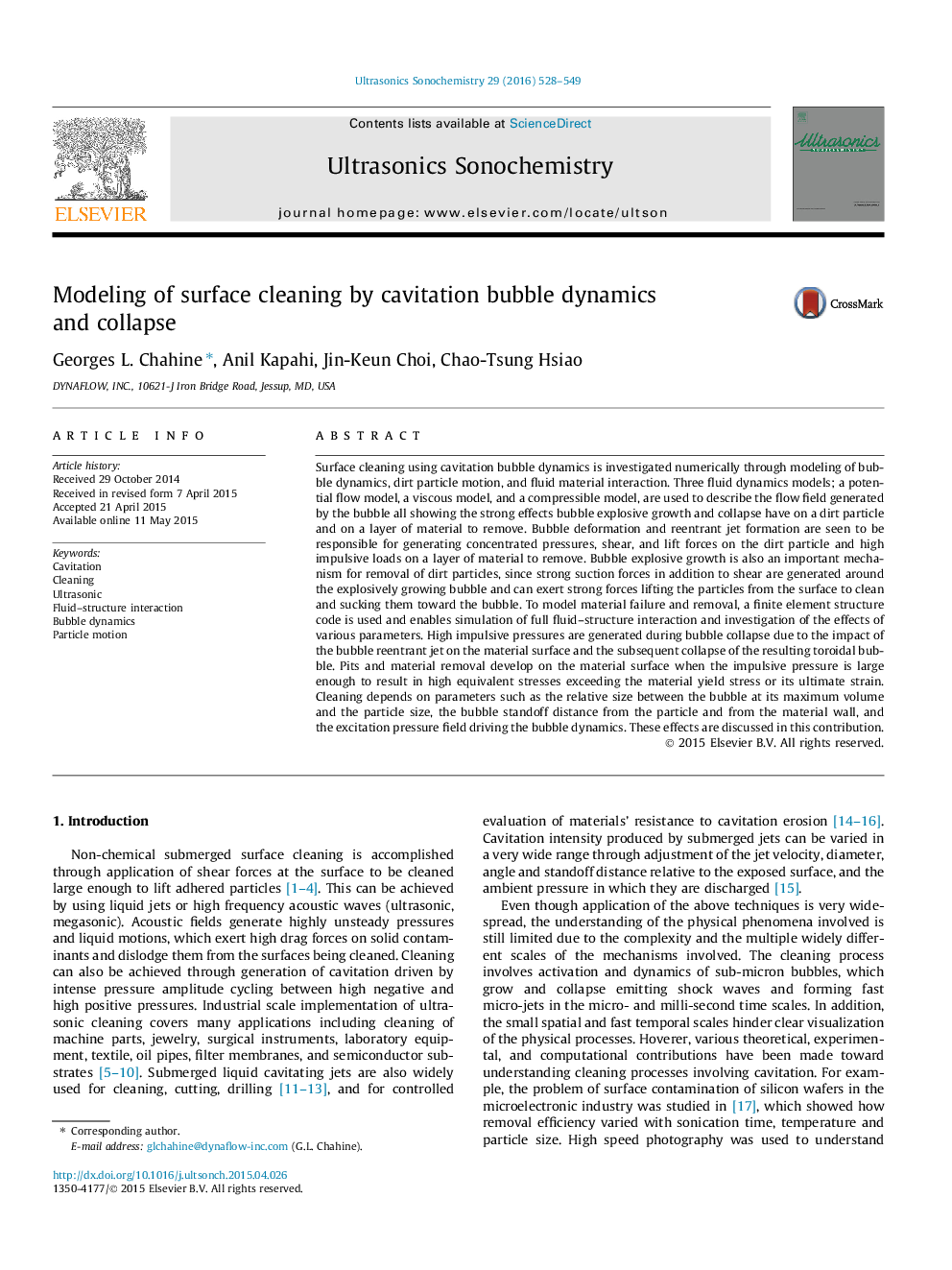| کد مقاله | کد نشریه | سال انتشار | مقاله انگلیسی | نسخه تمام متن |
|---|---|---|---|---|
| 1265835 | 1496875 | 2016 | 22 صفحه PDF | دانلود رایگان |
• Advanced computational methods are used to explain cleaning by cavitation bubbles.
• Bubble growth produces suction forces on particles.
• Bubble collapse generates reentrant jet and very strong shear right at the wall.
• Bubble forces on particles depend on bubble strength and relative positions.
• Dirt layer removal depends on relative bubble collapse energy and coating strength.
Surface cleaning using cavitation bubble dynamics is investigated numerically through modeling of bubble dynamics, dirt particle motion, and fluid material interaction. Three fluid dynamics models; a potential flow model, a viscous model, and a compressible model, are used to describe the flow field generated by the bubble all showing the strong effects bubble explosive growth and collapse have on a dirt particle and on a layer of material to remove. Bubble deformation and reentrant jet formation are seen to be responsible for generating concentrated pressures, shear, and lift forces on the dirt particle and high impulsive loads on a layer of material to remove. Bubble explosive growth is also an important mechanism for removal of dirt particles, since strong suction forces in addition to shear are generated around the explosively growing bubble and can exert strong forces lifting the particles from the surface to clean and sucking them toward the bubble. To model material failure and removal, a finite element structure code is used and enables simulation of full fluid–structure interaction and investigation of the effects of various parameters. High impulsive pressures are generated during bubble collapse due to the impact of the bubble reentrant jet on the material surface and the subsequent collapse of the resulting toroidal bubble. Pits and material removal develop on the material surface when the impulsive pressure is large enough to result in high equivalent stresses exceeding the material yield stress or its ultimate strain. Cleaning depends on parameters such as the relative size between the bubble at its maximum volume and the particle size, the bubble standoff distance from the particle and from the material wall, and the excitation pressure field driving the bubble dynamics. These effects are discussed in this contribution.
Journal: Ultrasonics Sonochemistry - Volume 29, March 2016, Pages 528–549
